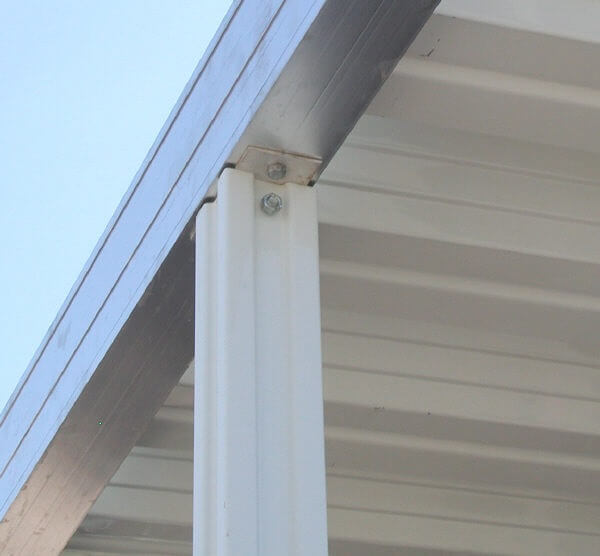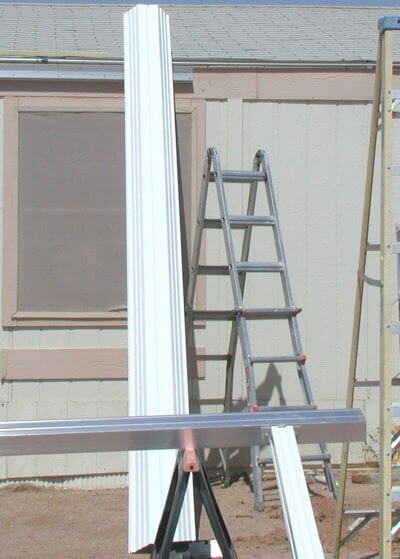Awning Parts
The components that make an aluminum awning
The first awning part we
usually deal with is the hanger. This is the part that attaches to the
home. The hanger comes in many different types. Some of these are
the C-hanger, the G-rail, an A-rail and hanger combination and the J-hanger. Hangers can be extruded aluminum or roll form. Extruded aluminum is the
strongest and thus the most expensive.
The next awning part to
get unpacked is the gutter. This is the part on the outside of the
awning. It is a trough to run the water to the downspouts and it is also
something to mount the posts to. Gutters can be extruded or roll form
and come in different heights, usually 5" - 7". This is determined by
the height of the panels used. Gutters are made in standard lengths such
as 20' or 24'. On the job site the gutters are cut to size and if more
than one are needed they are connected with a gutter splice.
The side fascias cap the
ends of the awning. They connect to the hanger and to the gutter at each
end of the awning. They are also attached to the panels every foot for
the length of the projection. Side fascias and gutters usually have
grooves in them for the color trim to be snapped into. Color trim can be
2" wide or 4" wide and is used as a color accent to match the awning with your
home.
Awning posts come in
several styles and many different materials and gauges. The most common
one we use is the 3" cloverleaf aluminum post in the 8' length and a .030
gauge. White is the color of preference although neutral is also
available. The roll formed scroll column is the second most popular
awning post. Awning posts come in standard lengths from 8' to 12' and
are cut to fit on the job site. It is important to note that on
the job cutting is almost always required to obtain the proper pitch and to
keep the gutter level.
The awning post needs to
be attached to the gutter with a post bracket. The same bracket can be
used at the bottom to anchor into an existing concrete slab or it can be
bolted to a ground anchor and buried in concrete.
The awning panels, or pans
as we call them, are the roof to your awning. They are usually white in
color and 12" wide. The standard lengths are from 8' to 20'. The
thickness can vary from .018 up to .040. The projection of the awning
and the wind factor you are trying to achieve will help to determine the gauge
of panels needed. An example would be an 8' panel in the .018 gauge
would pass most building codes with a wind factor of about 40mph. I say
about because there are other factors involved. The same 8' awning with
.040 gauge panels would usually pass a 90mph wind factor. To keep the
panels from leaking water at the hanger flashing is used to form a seal
between the house and the awning.
The last awning parts we
install are the downspouts and elbows. They attach to the awning posts
and run the water from the gutter to the ground.
In the Mesa Arizona area give me a call for a free awning estimate.
CR Shades - Dennis Gourley - Sales - 480-935-2848
top of Awning Parts
Enjoy this page? Please pay it forward. Here's how...
Would you prefer to share this page with others by linking to it?
- Click on the HTML link code below.
- Copy and paste it, adding a note of your own, into your blog, a Web page, forums, a blog comment, your Facebook account, or anywhere that someone would find this page valuable.



Would you prefer to share this page with others by linking to it?